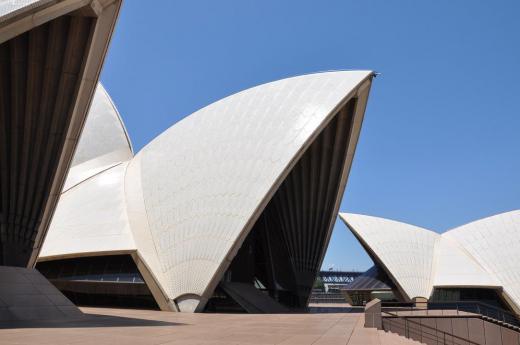A shell roof is a common type of roof that is made from thin material. The roof is curved and used to cover large, one-story buildings. As it usually is aesthetically pleasing, a shell roof is commonly used in public buildings. These roofs are useful when the inside of the building is open and does not contain walls or pillars that could support a flat or pitched roof.
There are three main types of shell roof: the single barrel shell, multi barrel shell and the continuous barrel. A single barrel shell looks like a long arch and is used in long, rectangular structures, such as airplane hangars. Multi-barrel shells often contain arrangements of different-sized arches, and are often used in public works buildings. Continuous barrel roofs are used on large structures, such as airports, that require multiple shells to cover the floor space. These roofs appear to roll up and down like waves.

The floor space beneath this roof can be made much larger than the floor space below another type of roof. This is because the curve in the roof adds additional structural support, allowing the roof to be heavier and larger while remaining intact. It is an ideal roof structure for office buildings and public buildings, such as libraries, theaters and recreation centers, where large groups of people need to meet in an unobstructed area.

These roofs have interesting aesthetics and can be used to beautify a building. The Sydney Opera House is a famous example of a building with a shell roof. Additionally, because their design directs water, snow and debris off the edge of the roof — much in the same way that a pitched roof does — a shell roof rarely leaks.
Though this type of roof has many advantages, they are quite costly to build. The slope of the roof and the curve of the arc must be carefully designed in order for the building to remain stable. Also, a shell roof does not work well on buildings with many levels, as the entire structure of the roof must be built on a single level. There are also problems with lighting and ventilation in these types of roofs because they do not allow for skylights and overhead ventilation is difficult to install.
While difficult to design and somewhat expensive, this type of roof can save a builder money on materials. A shell roof is relatively thin and does not require support beams. The cost of materials for this type of roof can be considerably lower than the materials required for either a flat or a pitched roof.
